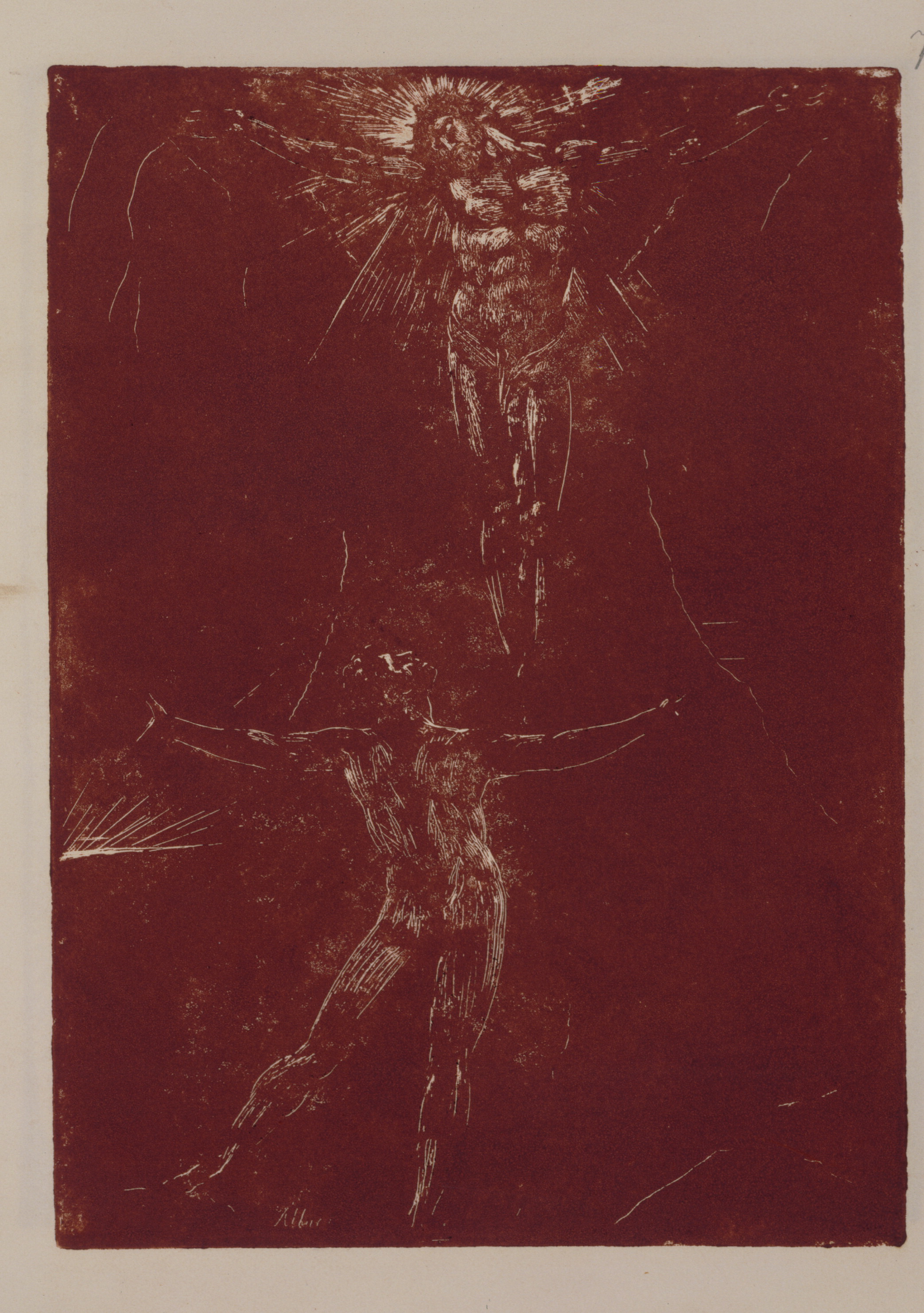Vision of Last Judgment, (E 560)
"If the Spectator could Enter into these Images in his
Imagination approaching them on the Fiery Chariot of his
Contemplative Thought if he could Enter into Noahs Rainbow or
into his bosom or could make a Friend & Companion of one of these
Images of wonder which always intreats him to leave mortal things
as he must know then would he arise from his Grave then would he
meet the Lord in the Air & then he would be happy General
Knowledge is Remote Knowledge it is in Particulars that Wisdom
consists & Happiness too. Both in Art & in Life General Masses
are as Much Art as a Pasteboard Man is Human Every Man has Eyes
Nose & Mouth this Every Idiot knows but he who enters into &
discriminates most minutely the Manners & Intentions the
Characters in all their branches is the
alone Wise or Sensible Man & on this discrimination All Art is
founded. I intreat then that the Spectator will attend to the
Hands & Feet to the Lineaments of the Countenances they are all
descriptive of Character & not a line is drawn without intention
& that most discriminate & particular much less an
Insignificant Blur or Mark>"
Quoting from Minlton
Klonsky's William Blake, The Seer and His Visions on
page 27:"Any work of the imagination, such as a poem or a picture, must necessarily be composed of mind-stuff, but Blake saw the larger creation as well, this very world as no different in kind. The acts that made up the world of the prophets, in the Bible and in the world, spoke through them as thoughts, miming the voice of God.
...
Side by side with his pantheon of 'Giant Forms' in the prophetic books, Blake also introduced a set of historical personae, such as Milton and Newton and Bacon and Locke, and, even under their proper names, a sub-cast of minor characters whose sole importance was that they once played a part in his own life. All of them act and react with one another, unite with or annihilate one another, shift identities and become one another like the phantoms of a dream, yet a dream within a larger dream, his own expanded into the 6,000-year-old dream of Albion. Mundane events in his own life become symbolic of cosmic events in eternity. Blake himself may appear among his own creations, as in Vala, when he and Catherine, apothesized as Los and Enitharmon, are glimpsed in a domestic scene at work together:
Four Zoas, Night VII, PAGE 98 [90],(E 369) 'And first he drew a line upon the walls of shining heaven And Enitharmon tincturd it with beams of blushing love'Or in Milton, when he becomes Palamabron (one of the many sons of the fourfold Los) and resumes his quarrel with a quondam benefactor, William Hayley, there cast as Satan, whom Blake regarded as 'corporeal friend' but 'spiritual enemy':
Milton, Plate 7,(E 100) "Then Palamabron reddening like the Moon in an eclipse, Spoke saying, You know Satans mildness and his self-imposition, Seeming a brother, being a tyrant, even thinking himself a brother While he is murdering the just;"By his envisioning himself in this way, as the blake-smith and poet Los, we can thus see Blake as he saw himself thro' his own eyes."
 |
| Library Of Congress Jerusalem Plate 76 |
"...Blake as an engraver also combined 'upper and lowers,' relief and intaglio, on copper plates that were etched and then printed in black and white. But which, relief or intaglio, was black, which white? He could, and did engrave them either way, sometimes using black line in relief, etching away the whites, as in the designs for Songs of Innocence, and sometimes using white line on black ground...as in the quicksilvery illustrations for Jerusalem. But the choice, in either case, was as much mystical as aesthetic. For Blake not only believed but also lived and enacted his ideas, reaffirming them within and without in each line he engraved."

No comments:
Post a Comment